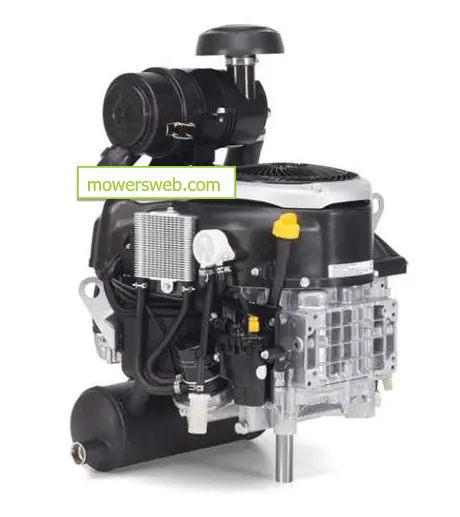The Yamaha MX825V EFI engine is a robust powerhouse designed to deliver exceptional performance in various applications. Its EFI system enhances fuel efficiency and power output, making it a preferred choice for professionals and enthusiasts alike.
Despite its advanced engineering, users may encounter several issues that can impede its optimal operation. knowing how to address this problem is crucial for maintaining the engine’s reliability and longevity. Let’s dive in.

Yamaha MX825V EFI Problems
1. Engine Starting Issues
One of the most frequent problems with the Yamaha MX825V EFI engine is difficulty starting. This can be caused by several factors, including a weak battery, a faulty ignition switch, or issues with the EFI system.
Ensuring the battery is fully charged and in good condition is the first step in troubleshooting problems.
2. Poor Engine Performance
Poor engine performance can manifest as reduced power output, rough idling, or stalling. These issues often stem from clogged fuel injectors, a dirty air filter, or problems with the spark plugs.
Regular maintenance and cleaning of these components can significantly improve engine performance.
3. EFI System Errors
The EFI system in the Yamaha MX825V is designed to optimize fuel delivery and engine performance. However, sensor malfunctions or wiring issues can lead to EFI errors, causing the engine to run inefficiently or not at all. Diagnosing EFI errors typically requires specialized diagnostic tools to read error codes and identify the faulty component.
4. Fuel Delivery Problems
Fuel delivery issues, such as a clogged fuel filter or a malfunctioning fuel pump, can severely affect the engine’s performance. Ensuring the fuel system is clean and free of obstructions is essential for maintaining efficient fuel delivery to the engine.
Read Scag Check Engine Light Codes(Learn and Fix)
Troubleshooting Yamaha MX825V EFI Problems
1. Diagnosing Starting Issues
- Check the Battery: Ensure the battery is fully charged and the connections are secure. A weak or dead battery is a common cause of starting problems.
- Inspect the Ignition Switch: A faulty ignition switch can prevent the engine from starting. Test the switch for continuity and replace it if necessary.
- EFI System Check: Use a diagnostic tool to read any error codes from the EFI system. This can help identify specific issues within the EFI system that may be preventing the engine from starting.
2. Improving Engine Performance
- Clean Fuel Injectors: Clogged fuel injectors can cause poor engine performance. Use a fuel injector cleaner to remove deposits and improve fuel flow.
- Replace Air Filter: A dirty air filter restricts airflow to the engine, affecting performance. Regularly replacing the air filter ensures optimal air intake.
- Inspect Spark Plugs: Worn or fouled spark plugs can lead to misfires and rough idling. Replace spark plugs as needed to maintain proper ignition.
Read 5 Common Exmark 708cc Engine Problems(With Solutions)
3. Resolving EFI System Errors
- Sensor Check: EFI systems rely on various sensors to monitor engine parameters. Check sensors for proper operation and replace any that are faulty.
- Wiring Inspection: Inspect the wiring harness for any damaged or loose connections. Secure or replace any compromised wiring to ensure proper EFI system function.
- Software Update: Ensure the EFI system software is up-to-date. Manufacturers often release updates to improve system performance and resolve known issues.
4. Addressing Fuel Delivery Problems
- Replace Fuel Filter: A clogged fuel filter can restrict fuel flow to the engine. Regularly replacing the fuel filter ensures a steady supply of clean fuel.
- Test Fuel Pump: A malfunctioning fuel pump can cause fuel delivery issues. Test the fuel pump’s pressure and flow rate, and replace it if it fails to meet specifications.
- Check Fuel Lines: Inspect fuel lines for any leaks, kinks, or blockages. Ensure all connections are secure and the lines are in good condition.
Read Kohler Engine Not Charging Battery(3 Quick Ways To Fix)
Preventative Maintenance for the Yamaha MX825V EFI Engine
Regular Oil Changes
Changing the engine oil at recommended intervals is crucial for maintaining engine health. Use the appropriate oil type and viscosity as specified by the manufacturer.
Cooling System Maintenance
The cooling system is vital for preventing engine overheating. Regularly check the coolant level and condition, and ensure the radiator and cooling fins are clean and unobstructed.
Scheduled Inspections
Performing regular inspections of the engine and its components can help identify potential issues before they become serious problems. Follow the manufacturer’s maintenance schedule and guidelines for thorough inspections.
Using Quality Fuel
Using high-quality fuel can prevent many common issues associated with the fuel system. Avoid using contaminated or low-grade fuel, which can lead to clogged injectors and poor engine performance.
Understanding EFI Technology
How EFI Works
Electronic Fuel Injection (EFI) systems are designed to deliver precise amounts of fuel to the engine’s combustion chambers. Sensors monitor various engine parameters, such as air intake, temperature, and throttle position, and send this data to the ECU (Engine Control Unit).
The ECU then calculates the optimal fuel delivery, ensuring efficient combustion and performance.
Advantages of EFI
- Improved Fuel Efficiency: EFI systems optimize fuel delivery, reducing fuel consumption and emissions.
- Enhanced Performance: By providing the right amount of fuel at the right time, EFI systems improve engine responsiveness and power output.
- Reduced Maintenance: EFI systems require less maintenance compared to traditional carbureted engines, as there are fewer mechanical components to wear out.
Read Kawasaki Charging System Troubleshooting(Solved)
Common EFI Components and Their Functions
Fuel Injectors
Fuel injectors are responsible for spraying fuel into the engine’s combustion chambers. They must be clean and functioning correctly to ensure proper fuel atomization and combustion.
Throttle Position Sensor (TPS)
The TPS monitors the position of the throttle and sends this information to the ECU. This data helps the ECU determine the correct fuel delivery based on the engine’s load and speed.
Mass Air Flow Sensor (MAF)
The MAF sensor measures the amount of air entering the engine. This information is crucial for the ECU to calculate the appropriate fuel-to-air ratio.
Oxygen Sensors (O2 Sensors)
Oxygen sensors monitor the amount of oxygen in the exhaust gases. This data allows the ECU to adjust the fuel mixture for optimal combustion and emission control.
Engine Control Unit (ECU)
The ECU is the brain of the EFI system. It receives data from various sensors and uses this information to control fuel delivery, ignition timing, and other critical engine functions.
Best Practices for EFI Engine Care
Regular Diagnostic Scans
Performing regular diagnostic scans can help identify potential issues with the EFI system before they lead to significant problems. Use a diagnostic tool compatible with the Yamaha MX825V EFI to read and clear error codes.
Maintaining Clean Components
Keeping components such as fuel injectors, sensors, and the throttle body clean is essential for optimal EFI system performance. Use appropriate cleaning solutions and follow the manufacturer’s recommendations for cleaning intervals.
Using OEM Parts
When replacing any components of the EFI system, use Original Equipment Manufacturer (OEM) parts to ensure compatibility and reliability. Aftermarket parts may not meet the same quality standards, which can lead to further issues.
Read Kohler Engine Identification Missing(Find Out Here)
FAQs
Why is my Yamaha MX825V EFI engine not starting?
Your Yamaha MX825V EFI engine may not start due to a weak battery, a faulty ignition switch, or issues within the EFI system. Check the battery’s charge, inspect the ignition switch, and use a diagnostic tool to identify any EFI errors.
What causes poor performance in the Yamaha MX825V EFI engine?
Poor performance can be caused by clogged fuel injectors, a dirty air filter, or worn spark plugs. Regular maintenance and cleaning of these components can improve engine performance.
How do I resolve EFI system errors on my Yamaha MX825V?
To resolve EFI system errors, check the sensors for proper operation, inspect the wiring harness for damage, and ensure the EFI software is up to date. Use a diagnostic tool to read error codes and identify the faulty component.
What should I do if my Yamaha MX825V has fuel delivery problems?
If your Yamaha MX825V has fuel delivery problems, replace the fuel filter, test the fuel pump, and inspect the fuel lines for leaks or blockages. Ensure the fuel system is clean and free of obstructions.
How often should I perform maintenance on my Yamaha MX825V EFI engine?
Follow the manufacturer’s maintenance schedule for regular oil changes, cooling system checks, and inspections of the engine and its components. Regular maintenance is crucial for preventing issues and ensuring reliable performance.
What are the advantages of the EFI system in the Yamaha MX825V?
The EFI system in the Yamaha MX825V offers improved fuel efficiency, enhanced engine performance, and reduced maintenance requirements compared to traditional carbureted engines.
Final words
Maintaining the Yamaha MX825V EFI engine requires understanding common problems and knowing how to troubleshoot and resolve them.
By following the best practices for EFI engine care and performing regular maintenance, you can ensure your engine operates efficiently and reliably for years to come.
Proper care and attention to the EFI system’s components will enhance the engine’s performance, fuel efficiency, and overall longevity.




